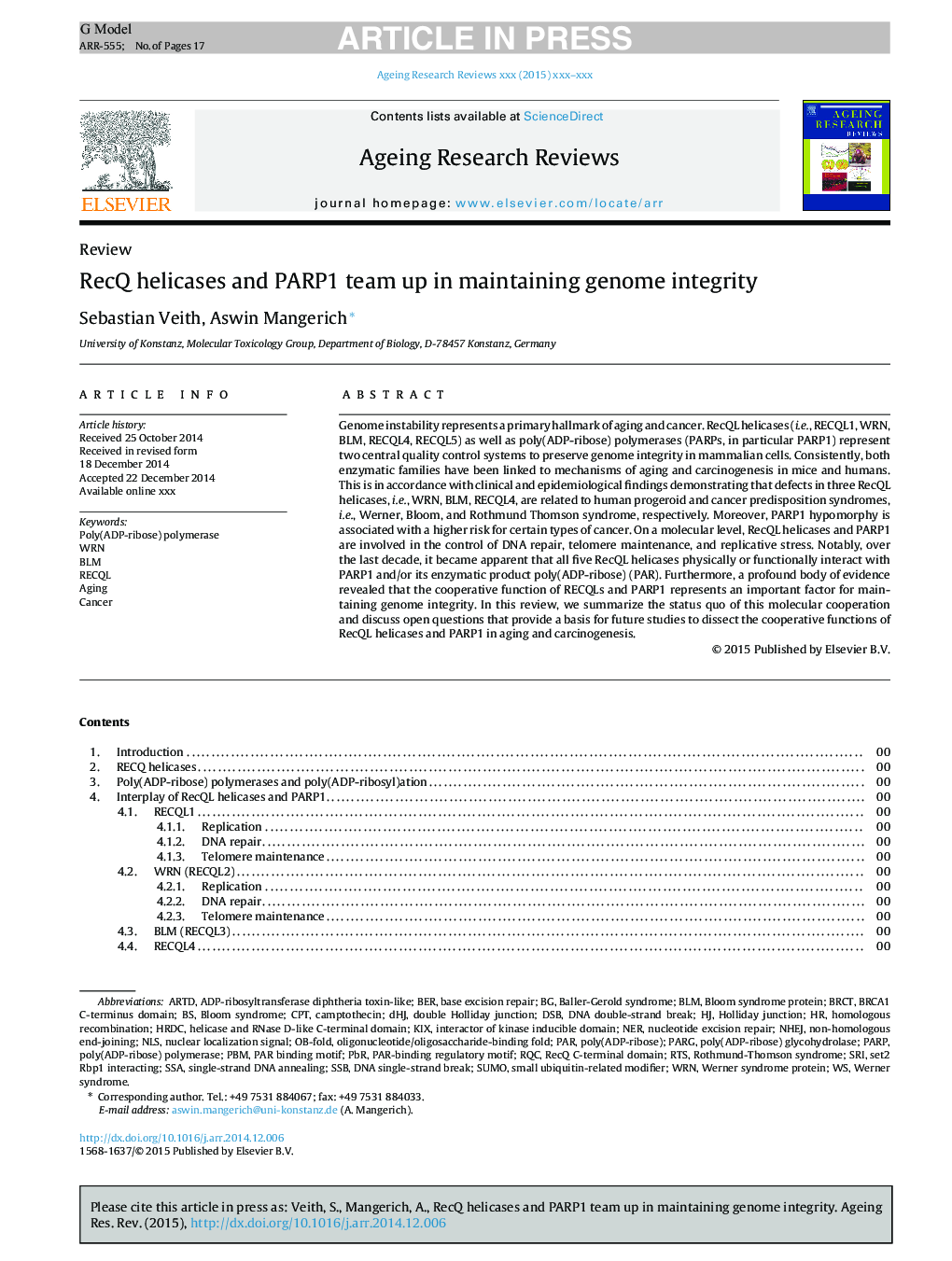| Article ID | Journal | Published Year | Pages | File Type |
|---|---|---|---|---|
| 10736558 | Ageing Research Reviews | 2015 | 17 Pages |
Abstract
Genome instability represents a primary hallmark of aging and cancer. RecQL helicases (i.e., RECQL1, WRN, BLM, RECQL4, RECQL5) as well as poly(ADP-ribose) polymerases (PARPs, in particular PARP1) represent two central quality control systems to preserve genome integrity in mammalian cells. Consistently, both enzymatic families have been linked to mechanisms of aging and carcinogenesis in mice and humans. This is in accordance with clinical and epidemiological findings demonstrating that defects in three RecQL helicases, i.e., WRN, BLM, RECQL4, are related to human progeroid and cancer predisposition syndromes, i.e., Werner, Bloom, and Rothmund Thomson syndrome, respectively. Moreover, PARP1 hypomorphy is associated with a higher risk for certain types of cancer. On a molecular level, RecQL helicases and PARP1 are involved in the control of DNA repair, telomere maintenance, and replicative stress. Notably, over the last decade, it became apparent that all five RecQL helicases physically or functionally interact with PARP1 and/or its enzymatic product poly(ADP-ribose) (PAR). Furthermore, a profound body of evidence revealed that the cooperative function of RECQLs and PARP1 represents an important factor for maintaining genome integrity. In this review, we summarize the status quo of this molecular cooperation and discuss open questions that provide a basis for future studies to dissect the cooperative functions of RecQL helicases and PARP1 in aging and carcinogenesis.
Keywords
CPToligonucleotide/oligosaccharide-binding foldRQCRothmund-Thomson syndromePARGARTDHRDCBRCTNLSPARPRTSDSBPBMSSAPBRNHEJBLMSRIBERNEROB-foldHolliday junctionnucleotide excision repairbase excision repairParBloom syndromenuclear localization signalDNA double-strand breaknon-homologous end-joiningHomologous recombinationPoly(ADP-ribose)Poly(ADP-ribose) polymerasecamptothecinpoly(ADP-ribose) glycohydrolase
Related Topics
Life Sciences
Biochemistry, Genetics and Molecular Biology
Ageing
Authors
Sebastian Veith, Aswin Mangerich,
